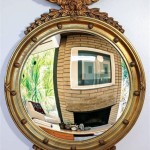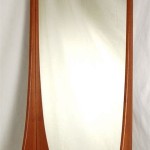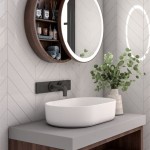How To Change Mirror Display On PC
Mirroring a PC display to another screen, such as a projector or television, is a common requirement for presentations, entertainment, and extending workspace. This article provides a comprehensive guide to changing mirror display settings on a Windows PC, encompassing multiple methods and troubleshooting common issues.
The simplest method to initiate screen mirroring involves using the Windows Project feature. This feature can be accessed through the “Win + P” keyboard shortcut. Pressing these keys simultaneously brings up the Project menu on the right side of the screen, offering four display options: "PC screen only," "Duplicate," "Extend," and "Second screen only."
"PC screen only" disables any external display connections, showing the desktop only on the primary PC monitor. "Duplicate" mirrors the primary display's content onto the connected secondary display. "Extend" expands the desktop across both displays, allowing users to treat them as a single, larger workspace. "Second screen only" deactivates the primary PC display and projects the desktop solely onto the connected secondary display.
Windows Display Settings offers a more granular approach to configuring mirror displays. Users can access Display Settings through the System settings menu or by right-clicking on the desktop and selecting "Display settings." This interface provides a visual representation of detected displays, numbered for identification. Users can select a display by clicking on its corresponding numbered representation in the settings window.
Within Display Settings, the "Multiple displays" dropdown menu replicates the functionality of the Project menu, offering the same four options: "PC screen only," "Duplicate," "Extend," and "Second screen only." Selecting "Duplicate" mirrors the primary display to the selected secondary display.
Display Settings also allows users to customize the resolution of each connected display independently. This is useful for optimizing the displayed image for different screen sizes and resolutions. Users should select the recommended resolution for each display for optimal clarity. Incorrect resolution settings can result in blurry or distorted images.
Orientation settings, also found within Display Settings, allow users to rotate the display image. Options typically include landscape, portrait, landscape (flipped), and portrait (flipped). These settings can be adjusted independently for each connected display, offering flexibility for various setup requirements.
For systems utilizing dedicated graphics cards, often found in gaming or design-focused PCs, the graphics card's control panel software offers additional display configuration options. This software, typically accessible via the system tray or by right-clicking on the desktop, allows for more advanced settings, including custom resolution settings, color calibration, and refresh rate adjustments.
Within the graphics card control panel, users can usually find a section dedicated to multiple display settings. This section often mirrors functionality found within Windows Display Settings but may offer additional features specific to the graphics card. Users should consult their graphics card manufacturer's documentation for specific instructions on configuring multiple displays.
Troubleshooting common mirror display issues often involves checking physical connections. Ensure all cables are securely connected to both the PC and the secondary display. Loose or damaged cables can prevent signal transmission and disrupt mirroring. Trying a different cable can help isolate cable-related problems.
Driver updates for both the graphics card and the display can resolve compatibility issues and improve performance. Outdated drivers can sometimes interfere with proper display functionality. Users should check their graphics card manufacturer's website and the display manufacturer's website for the latest driver updates.
If experiencing issues with specific applications not mirroring correctly, checking the application's settings may reveal display-specific options that need adjustment. Some applications allow for overriding system display settings, which can interfere with mirroring. Consulting the application's documentation can provide guidance on configuring display settings within the application.
Restarting the PC can often resolve temporary software glitches that may be interfering with display mirroring. This simple step can refresh system processes and restore proper functionality.
If problems persist, checking the Windows Event Viewer for error messages related to display drivers or hardware can offer valuable diagnostic information. This log can provide clues about the root cause of the problem and help guide troubleshooting efforts.
When using wireless display technologies, ensure both the PC and the receiving display device support the same wireless display standard, such as Miracast. Compatibility issues between devices can prevent successful wireless mirroring. Checking device specifications confirms compatibility.
Within wireless display settings, users might need to initiate a connection request from either the PC or the receiving display device. This often involves selecting the target device from a list of available devices within the wireless display settings menu on either the PC or the receiving device.
Network connectivity plays a crucial role in wireless display performance. A stable and robust network connection is essential for smooth, lag-free wireless mirroring. Poor network connectivity can result in choppy video and audio or connection drops.

Desktop Extension Or Duplication Mirror Settings In Display Control Panel

Desktop Mirroring Or Extend Technology Services

How To Mirror Android Screen Windows 11 Geeksforgeeks

How To Mirror Your Iphone Screen On A Computer Pcmag

Ultimate Guide Screen Mirroring Windows 11 For Beginner

Windows 10 Display Settings Main View Classroom Technology Centrenet

How To Use External Monitors With Mac Laptops And Desktops

6 Feasible Ways To Mirror Android Pc

How To Mirror Your Iphone Screen On A Computer Pcmag

Switch Between Displays Using Display Toggle








